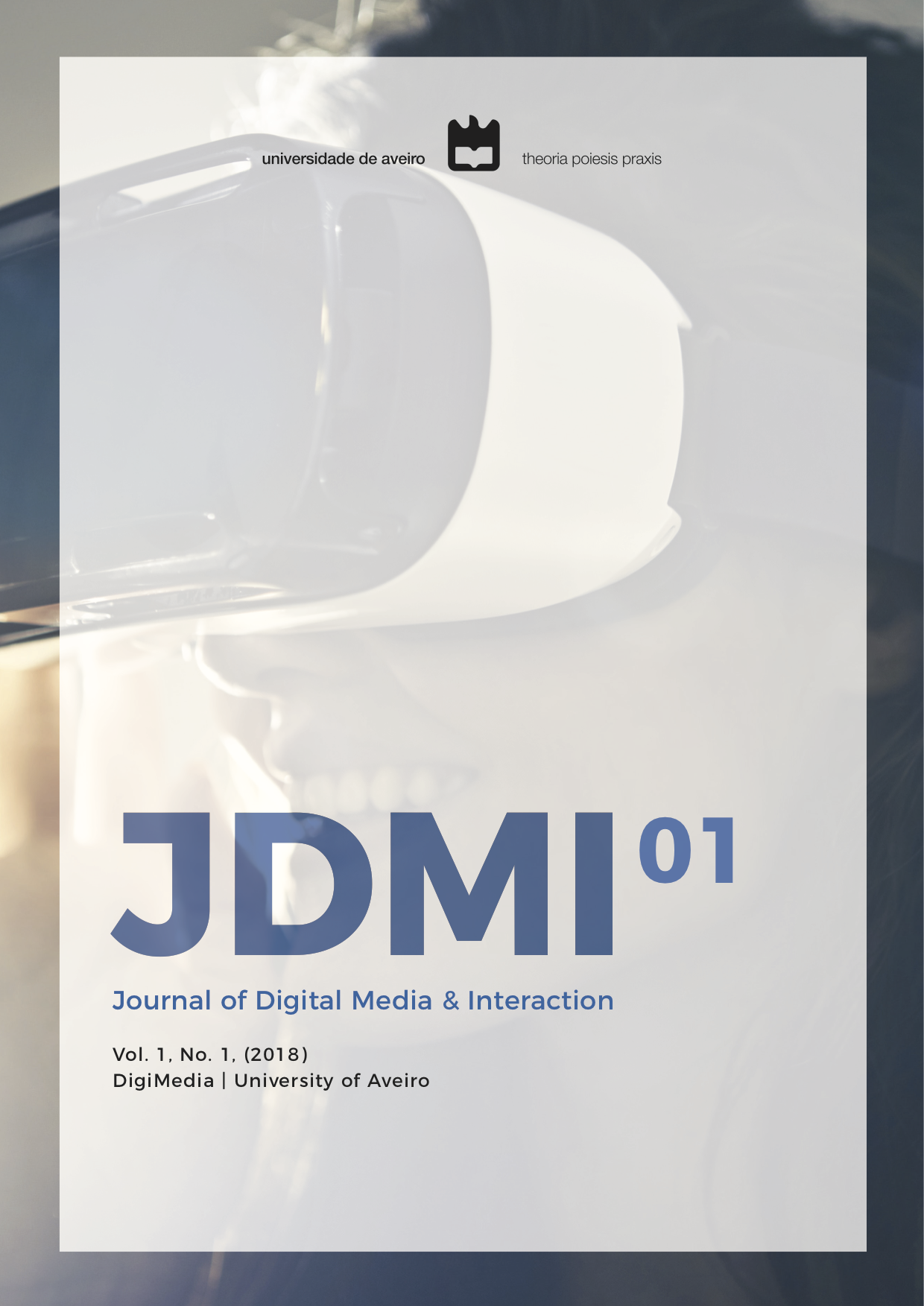Transcriação: o pensamento poético na criação de interfaces culturais
(Transcreation: Poetic Thinking in the Creation of Cultural Interfaces)
Abstract
O objetivo deste artigo é apresentar a tese de que o pensamento poético aplicado à criação de interfaces culturais reconfigura os modos de pronúncia e de interação no âmbito da cibercultura. Transcriar, nesse contexto, é recriar novas formas e funções para as interfaces culturais, neste caso, os blogues. Por meio da pesquisa em arte baseada na prática, é apresentado o percurso metodológico de transcriação do signo blogue para o blogue Metaforametrias.
(The aim of this article is to present the thesis that the poetic thought applied to the creation of cultural interfaces reconfigures the modes of pronunciation and interaction in the scope of cyberculture. Transcreate, in this context, is to recreate new forms and functions for cultural interfaces, in this case blogs. Through practice-based art research,is presented the methodological course of transcreation of the blog sign for the blogMetaforametrias.)
Downloads
References
Barros, M. (2010). Poesia completa. São Paulo: Leya.
Boyd, D. (2006). A Blogger’s Blog: Exploring the Definition of a Medium. Reconstruction, 6(4). Retrieved 27 March 2018from https://www.danah.org/papers/ABloggersBlog.pdf
Campos, H. (2015). Haroldo de Campos –Transcriação. (M. Tápia & T.M. Nóbrega,Eds.). São Paulo: Perspectiva.
Candy, L. (2006). Practice Based Research: A Guide. Creativity & Cognition Studios, 1.0. Retrieved 27 March 2018 from http://www.creativityandcognition.com
Flusser, V. (2008). O universo das imagens técnicas: elogio da superficialidade. São Paulo: Annablume.
Freire, P. (2005). Pedagogia do Oprimido. Rio de Janeiro: Paz e Terra.
Giannetti, C. (2003). Realidades e Mitos da Media Art. Retrieved from http://www.virose.pt/vector/b_08/gianetti.html
Jakobson, R. (2007). Linguística e comunicação(Cultriz). São Paulo.
Lemos, A. (2002). Cibercultura: tecnologia e vida social na cultura contemporânea. Porto Alegre: Sulina.
Lévy, P. (2010). Cibercultura. São Paulo: Editora 34.
Lovink, G. (2007). Zero comments: blogging and critical Internet Culture. New York: Routledge.
Luis Brea, J. (2002). La era postmedia. Acción comunicativa, prácticas (post) artísticas y dispositivos neomediales. Salamanca: Editorial CASA.
Machado, A. (2007). Arte e mídia. Rio de Janeiro: Jorge Zahar Editor Ltda.
Manovich, L. (2001). The language of new media. Cambridge: MIT Press.
McLuhan, M. (1964). Os meios de comunicação como extensões do homem. São Paulo: Cultrix.
O’Reilly, T. (2009). What is Web 2.0? Design patterns and business models for the next generation of software. Sebastopol: O’Reilly Media.
Pignatari, D. (2005). O que é comunicação poética. Cotia -SP: Ateliê Editorial.
Plaza, J. (1987). Tradução Intersemiótica. São Paulo: Perspectiva.
Prada, J. M. (2012). Prácticas artísticas e internet en la época de las redes sociales. Madrid: Ediciones Akal, S.A.
Copyright (c) 2018 Noeli Batista dos Santos, Bruno Mendes da Silva, Gabriela Borges, Vítor Manuel Reia-Baptista

This work is licensed under a Creative Commons Attribution-NonCommercial-NoDerivatives 4.0 International License.
Authors who publish in the JDMI agree to the following terms:
-
Authors retain copyright and grant the journal the right of first publication with the work simultaneously licensed under a Creative Commons BY-NC-ND 4.0. This licensing allows others to share the work with no changes and acknowledgement of the work's authorship and initial publication in this journal, but not for commercial use.
-
Authors are able to enter into separate, additional contractual arrangements for the non-exclusive distribution of the journal's published version of the work (e.g., post it to an institutional repository or publish it in a book), with an acknowledgement of its initial publication in this journal.
-
Authors are permitted and encouraged to post their work online (e.g., in institutional repositories or on their website) after publication, as it can lead to productive exchanges, as well as earlier and greater citation of published work.
Copyrights to illustrations published in the journal remain with their current copyright holders.
It is the author's responsibility to obtain permission to quote from copyright sources.
Any fees required to obtain illustrations or to secure copyright permissions are the responsibility of authors.
Additional Information
All correspondence concerning contributions, books and other review material should be sent to: deca-jdmi@ua.pt


